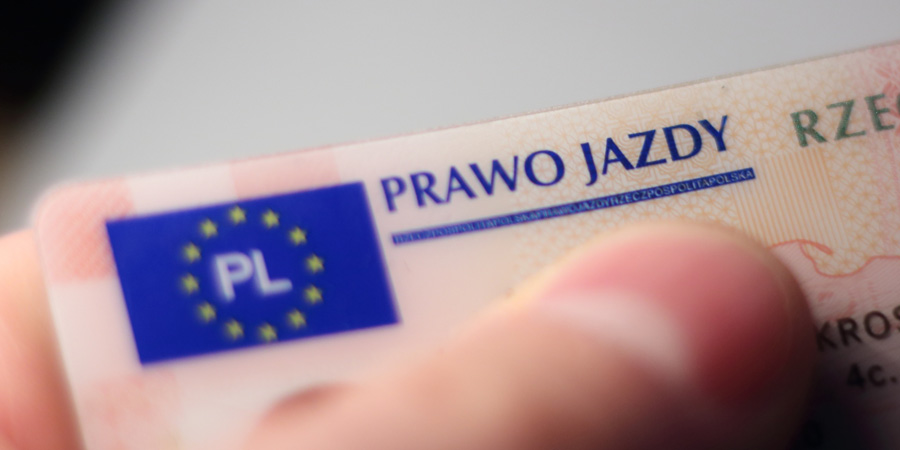
Karta Xpress Poland
Add a review FollowOverview
-
Founded Date August 7, 2008
-
Sectors Scaffolding
-
Posted Jobs 0
-
Viewed 108
Company Description
Here’s An Interesting Fact Concerning Driving License B1
Driving Licence B1
Driving licence B1 is a restricted version of the B category. It permits drivers to operate small-sized vehicles, such as vans or lorries. It also allows drivers to pull a trailer that weighs up to 750kg.
 The current licence format is a credit-card sized card that contains basic information such as name, father’s name, date of birth address, emergency contact details, blood group, and photo. It also has the categories that are permitted.
The current licence format is a credit-card sized card that contains basic information such as name, father’s name, date of birth address, emergency contact details, blood group, and photo. It also has the categories that are permitted.
Vehicles you can drive with a b1 licence
A B1 driving permit allows you to drive vehicles that have a maximum allowed mass of 3,500 kilograms (3.5 tonnes) and the maximum of eight passengers seats, with the driver not included. This category covers a broad variety of vehicles, from compact hatchbacks to spacious estates, and versatile SUVs. A category C license permits you to tow trailers that weigh up to 775kg.
A category A licence permits you to drive two-wheeled motor vehicles, including motorcycles. The older category A1 licence was replaced by the new category, allows you to drive motorcycles that are light with an engine size up to 125 cc and a power-to-weight ratio up to 11 kW. You can also drive vehicles with a category A licence that have a design speed of up to 31 mph but you must carry a helmet while driving them.
If you are a holder of a category A driving licence, you are allowed to drive vehicles with the maximum permissible mass (MAM) which can be up to 12,000 kilograms and can hold up to nine passengers, including the driver. If you want to drive a vehicle that is heavier, you must pass the four-part CPC test.
To get a B1 license you must pass both the practical and theory tests. The theory test tests your understanding of road signs and driving rules, as well as the perception of hazards. You will also be asked questions regarding the background of road traffic law. One method to prepare for the theory test is to take a number of mock tests prior to the time you take it. You can master the skills required to pass an actual test by taking lots of mock tests.
This type of license requires passing the theory test and the driving test in practice, and a medical test. The practical test will require driving a vehicle on real-world streets, while the theory test will include multiple-choice questions and will be taken using a certified computer. You will also need to take a medical examination conducted with a licensed physician. The doctor will examine your eyesight, blood pressure, and attest to your general health. If you’re driving to work, you may need to pass a medical questionnaire as well.
Vehicles you cannot drive with B1 licence
A driving license is a legal document which permits you to drive on roads that are open to the public in the nation where you live or most other countries. It is an important document that is a significant investment in terms of time and money. It can be difficult to obtain. It is recommended to practice a good deal and take as many mock tests as possible before taking the actual test. Mock tests are designed to give you a realistic experience of what the theory test will be like. You will also be able to understand the rules of driving and hazards.
The licence categories define the vehicles you are allowed to drive as well as the maximum permitted mass (MAM) of the trailer or vehicle. These codes can be found on the reverse of the licence. These codes are usually in lower case and italics however, some licences use capital letters to differentiate the various categories. Category M, for instance is a license that permits a driver to operate two-wheeled engines with engine power less than 50cc.
If you hold a category B driving licence (which includes cars) you can drive four-wheeled cars up to 400kg unladen, or 550kg when carrying goods. You can also attach an additional trailer up to 750kg.
A category B license is not valid for driving a minibus. You must pass the category C test in order to drive larger vehicles. The category C licence is not available to anyone younger than 18 years old. You can also take the test to obtain the C1 category licence which permits driving vehicles that weigh up to 11,000 kilograms and smaller trailers. This is a viable option for those who want to drive a smaller vehicle or truck with a trailer.
You could be hit with severe penalties and fines if you don’t hold an official license that permits you to drive certain kinds of vehicles. If you’re caught driving a vehicle that is not licensed properly and subsequently penalized up to PS1,000 and get between three and six penalty points.
Vehicles you cannot tow with a B1 licence
If you have a B1 licence and you have a B1 licence, you can transport a trailer up to 750kg. This is because the weight of a trailer and vehicle combination can not exceed 3.5 tonnes. If you plan to drive a trailer that is heavier than this, you will need to get an category B + E license. This is costly and requires a state-issued and practical exam.
If your licence is B1 Auto, you’re able to only tow small vehicles that have an automatic gearbox, such as cars or small vans. This licence does not allow you to drive a manual vehicle, so if you want to tow a larger vehicle, you’ll need to take the driving test. You can also obtain a category B licence which permits you to tow the vehicle up to 3,500kg.
You can also tow a trailer if your licence is category B with code 96. This type of license permits you to drive vehicles that have an MAM of 3500kg or more, and to tow trailers that weigh up to 750kg. The size of the trailer is determined by the date of the issue of your BE licence.
You can also tow a trailer of up to 750kg when you have B1 licences, without code 96 or a BE. You can tow a trailer that is designed to transport a horse or a boat. This type of trailer, also referred to as a lorry-mounted trailer, is typically attached to a truck or tractor.
The first type was a class 3 driving licence which allowed the use of trailers. This licence was changed to the BE licence, which only permits you to drive with a trailer that has a maximum gross vehicle (GVM) weight of 7.5 tonnes.
The B license is an excellent alternative for drivers who intend to own their vehicles but don’t intend to make use of them for commercial reasons. The B license can be used for commercial or private vehicles up to nine seats. It also allows the driver to pull a trailer that weighs up to 775kg.
Vehicles that you can’t tow without a B2 licence
The B1 driving license is a more restricted version of the B category driving license. It permits you to drive vehicles with up to 400 kg (or 550kg if it’s designed for carrying goods). This licence doesn’t permit you to drive trucks or vans. However, it allows you to drive smaller commercial vehicles such as cargo carriers, light trucks, and trailers. It is also possible to tow a trailer that has an GVM of up to 3.5 tonnes with this licence.
If you’re looking to drive larger vehicles, you’ll have to obtain a Category B + E license. This license comes with a state and practical exam, which can be quite expensive. You can also choose Category B with code96 which allows drivers to drive vehicles with a weight of up to 3.5 tonnes. However, you cannot pull kup prawo jazdy a a1 a2 Bez testu trailer using this licence if its GVM exceeds the vehicle’s.
Categories on your licence are there to aid you in understanding the types of vehicles you are able to drive. Certain categories on your licence may require additional tests or certifications to drive certain kinds of vehicles. If you’re not sure what each category is, you can always request a translation of your licence to make sense of the meanings.
A B2 license allows you to drive small passenger cars with nine seats and shorter than six meters. You can also tow a trailer up to 750 kg. Other vehicles you can drive with a B2 license include C1 (small automatic transmission car) C3 (low-speed truck) and C4 (tricycle).
The gold license is awarded to drivers with an impeccable driving record. They haven’t had any accidents or moving violations in the last five years. They are eligible for discounts on car insurance. You must have been accident-free for at least five years and 41 days prior to your birthday when your driver’s license expires. You must also pass both the theory test and the driving test in practice. Additionally, you must pass a first aid course and pass an eye test.

 en
en  lt
lt